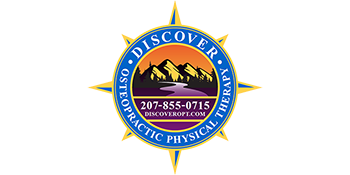So, what can you do if you are experiencing LBP? It is very common for LBP to radiate down into the legs. However, if you have symptoms of numbness in the limbs or saddle area or loss of ability to feel the urge to go to the bathroom, then an urgent phone call to your doctor is warranted3. If not, then many times this condition can be treated successfully at home with a few exercises and posture adjustments.
One of the most common causes and contributors to LBP is poor sitting posture. Prolonged sitting, especially with poor posture creates a long duration load on the lumbar discs which can cause them to become dehydrated and lose volume, which leads to pain and may also create a scenario of compression on the spinal nerves. If you have a job that involves a lot of sitting, it is important to get up and move around frequently to rehydrate the lumbar discs. Also when sitting, it is crucial that you use a lumbar support (a small pillow behind the lower back to stop you from slouching). The lumbar support keeps you in an optimal resting position while at the same time allowing your back muscles to relax.
Sleeping position can also play a role in lower back pain. When in bed, the goal should be to keep your lower back in a neutral position. A pillow between the knees when in side lying is helpful for this. Sometimes a small folded towel under the waist may be helpful as well when in side lying or supine to maintain a neutral position of the lumbar spine.
A regular exercise routine that includes mobility and strengthening exercises for the torso, hips, and legs is highly recommended for prevention and maintenance of a healthy lower back. However, if you are experiencing an acute episode of LBP, it can be difficult to know what exercises are useful and which ones to stay away from when all movement seems to hurt. Generally speaking, most types of LBP can be placed into one of two categories - those people who have more pain with lumbar flexion, and those who have pain more related to lumbar extension. People who have more pain with lumbar flexion tend to have difficulty with sitting or bending activities. People who have more pain with lumbar extension tend to have difficulty with standing and walking.
If you find that sitting and bending seem to trigger your lower back pain the most, then you will want to include primarily extension-based exercises in your routine and avoid flexion as much as possible until your pain is under control4. If standing and walking triggers your pain, then you will want to include mostly flexion-based exercises in your routine and avoid extension5. Also, if you have low back pain with standing and walking you likely have some movement restriction in the hips and will want to do some hip stretching and possibly strengthening too.


